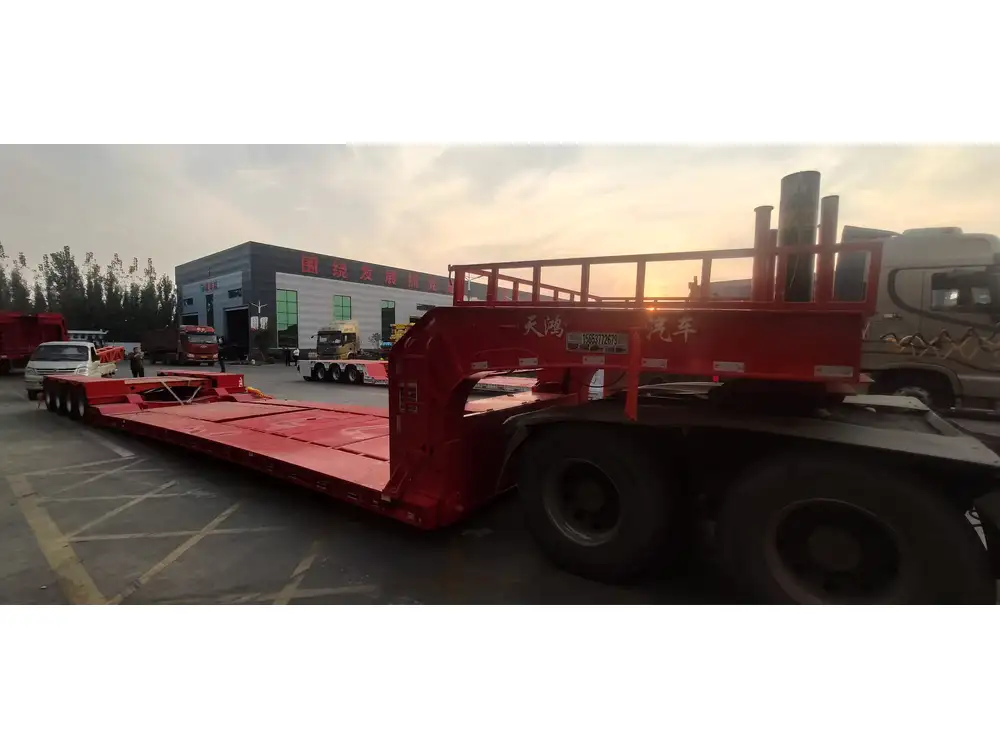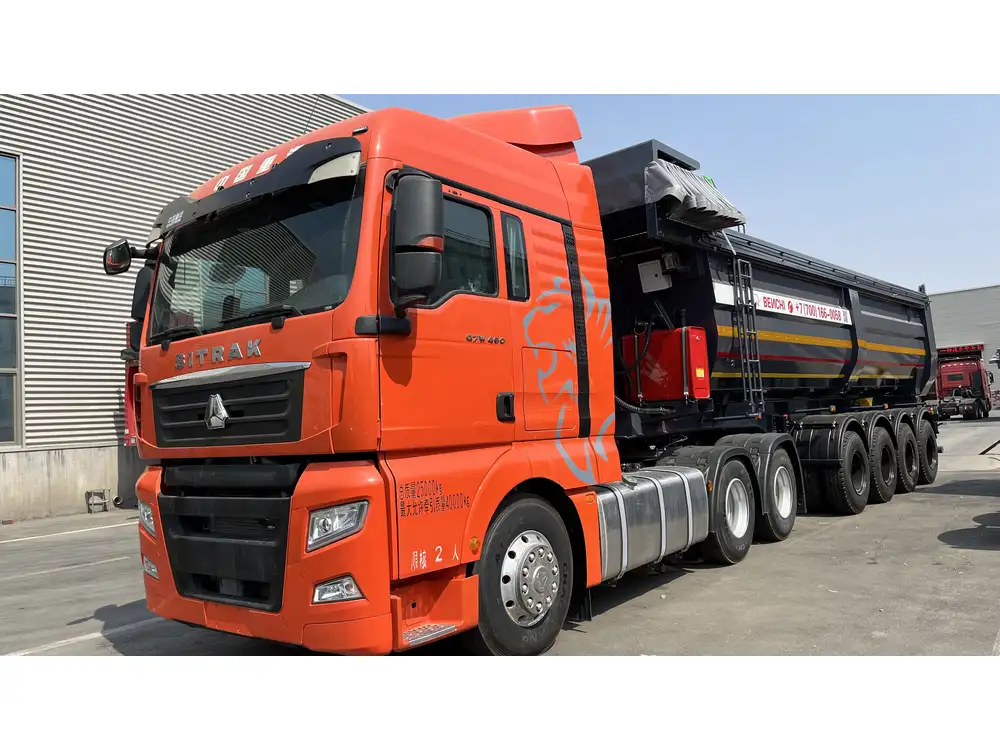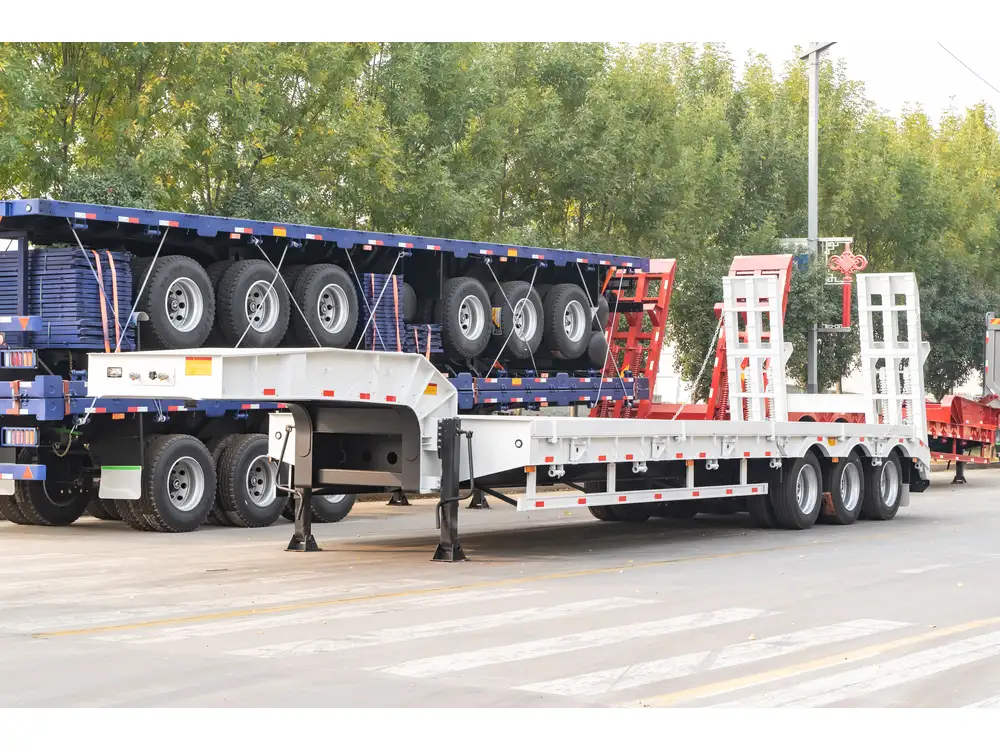In the vast realm of logistics and transportation, semi-trailers play a pivotal role in ensuring efficient goods movement across distances. Understanding the factors that jeopardize the structural integrity of a semi-trailer box is crucial for manufacturers, operators, and end users alike. As industry standards evolve and the demand for heavy-duty transport escalates, ensuring the strength of a semi-trailer box becomes non-negotiable. This article delves deeply into the myriad factors that can compromise the strength of a semi-trailer box, offering insights that can bolster your fleet’s performance and longevity.
1. Material Selection: The Foundation of Integrity
1.1. Types of Materials Used
The strength of a semi-trailer box largely hinges on the materials employed in its construction. Commonly used materials include:
| Material Type | Weight | Strength | Corrosion Resistance | Cost |
|---|---|---|---|---|
| Aluminum | Light | Moderate | High | Moderate |
| Steel (Mild) | Heavy | High | Moderate | Low |
| High-Strength Steel | Medium | Very High | Low | High |
| Fiberglass Reinforced Plastic (FRP) | Light | Moderate | High | Moderate |
While aluminum is favored for its weight advantage, mild steel offers superior strength. High-strength steel, although pricier, delivers consistent performance under stress. Each material contributes differently to the overall resilience and performance of the trailer.

1.2. Impact of Poor Material Selection
Opting for subpar or mismatched materials can drastically affect the overall durability of a semi-trailer box. Inadequate material choices increase the risk of:
- Deformation: Caving under heavy cargo loads.
- Cracking: Resulting from thermal expansion and contraction.
- Corrosion: Particularly in environments with high humidity or exposure to corrosive agents.
2. Design Flaws: Engineering Missteps
2.1. Structural Design and Engineering
The structural integrity of a semi-trailer box is contingent upon sound engineering principles. Design flaws, such as ineffective load distribution and inadequate support systems, can lead to catastrophic failures. Key design elements include:
- Cross Members: These are crucial for load distribution. Insufficient or poorly located cross members can lead to excessive bending and fatigue.
- Weld Joints: The strength of these connections is paramount. Weak welds can fail under load stress.
- Frames and Fittings: Improperly designed frames and fittings can create points of weakness.

2.2. Reevaluating Design Methodologies
Manufacturers should engage in rigorous design reviews, implementing computer-aided design (CAD) simulations to stress-test various load scenarios. This proactive approach anticipates vulnerabilities and refines structural performance before production.
3. Load Management: Balancing Act
3.1. Proper Load Distribution
Improper loading can spell disaster. The weight should be evenly distributed to prevent stress concentrations in specific areas, which can lead to:
- Bowing: Examining the trailer’s length and structural load capacity.
- Sway: High loads positioned incorrectly can cause instability during transit.

3.2. Weight Limits: Industry Standards
Understanding and adhering to legal weight limits is crucial. Exceeding these limits can put undue stress on the semi-trailer components, leading to premature wear. Implementing real-time load monitoring technologies can ensure compliance and enhance operational safety.
4. Environmental Factors: Nature’s Toll
4.1. Weather Conditions
Extreme weather conditions significantly affect the integrity of semi-trailer boxes. Factors to consider include:
- Temperature Swings: High heat can warp materials, while extreme cold can lead to brittleness.
- Moisture Levels: Environments with high humidity promote corrosion, particularly in steel trailers.

4.2. Exposure to Elements
Continuous exposure to sunlight (UV degradation), rain, and snow can compromise the strength and lifespan of materials.
Strategies for Mitigation:
- Applying protective coatings to vulnerable surfaces.
- Employing weather-resistant materials significantly increases durability.
5. Usage Patterns: Understanding Operational Strains

5.1. Frequent and Heavy Use
Heavy-duty usage involving frequent loading and unloading can lead to:
- Wear and Tear: Components suffer stress from repetitive actions.
- Increased Maintenance Needs: Regular service checks become more critical for safety and longevity.
5.2. Drivers’ Role
Skill and experience levels among drivers can impact the strain placed on semi-trailers. Proper driving techniques—especially during loading, securing, and frequent stops—are imperative for preservation.
6. Maintenance Practices: The Importance of Routine Checks

6.1. Regular Inspections and Servicing
To ensure long-term performance, routine maintenance is crucial. Neglecting maintenance can lead to:
- Structural Damage: Small cracks or weaknesses can escalate into major failures if left unchecked.
- Component Overload: Without checks, components may be subjected to undue stress.
6.2. Key Maintenance Practices
Implementing a systematic maintenance schedule should encompass:
- Visual Inspections: Regular reviews of the trailer structure.
- Load Tests: Checking for underlying weaknesses not visibly apparent.
- Repair Protocols: Immediate addressing of issues like rust spots or cracks.
7. Precautionary Measures: Enhancing Strengths

7.1. Structural Reinforcement Techniques
Manifests in design reviews and upgrades, certain reinforcement options can bolster the strength of a semi-trailer box. Considerations include:
- Additional Cross Members: Strategically adding stress-bearing elements can disperse loads more evenly.
- Composite Materials: Integrating advanced composite materials enhances durability without adding unnecessary weight.
7.2. Technological Innovations
Advancements in technology offer innovative solutions to reinforce semi-trailers. For instance, laser-cut steel components can improve precision and fit, crucial for maintaining integrity under load.
8. Conclusion: A Multifaceted Approach to Strength Preservation
The strength of a semi-trailer box is influenced by an amalgamation of factors ranging from material selection and design integrity to environmental exposure and usage patterns. A comprehensive approach involving meticulous planning, routine maintenance, and adherence to industry best practices can significantly enhance the strength and durability of these critical transportation assets.
Investing time and resources in understanding what jeopardizes the strength of a semi-trailer box will not only safeguard your cargo but also enhance the longevity of your equipment. In a competitive transportation industry, building resilient semi-trailer boxes is not merely advantageous; it is essential for success. By addressing each contributing factor detailed above, manufacturers and operators can ensure that their fleets remain robust, efficient, and ready to meet the demands of the market head-on.



